There are countless types of dresses for women, each with its own unique style, silhouette, and occasion. Here are some popular types of dresses:
A-Line Dress: This classic silhouette features a fitted bodice that gradually flares out from the waist, resembling the shape of the letter “A.” A-line dresses are flattering on many body types and can be worn for both casual and formal occasions.

Shift Dress: A shift dress is typically straight-cut and lacks a defined waistline. It’s known for its relaxed fit and versatile style, making it suitable for both casual and professional settings.

Wrap Dress: Characterized by its wrap-around design and adjustable waist tie, the wrap dress is known for its flattering silhouette and versatility. It’s suitable for a variety of body types and can be dressed up or down depending on the occasion.

Sheath Dress: This tailored and form-fitting dress is designed to accentuate the body’s natural curves. Sheath dresses are often worn for formal events or professional settings due to their sleek and sophisticated look.

Fit-and-Flare Dress: Similar to the A-line silhouette, the fit-and-flare dress features a fitted bodice that flares out at the waist, creating a feminine and playful silhouette. It’s a popular choice for parties, weddings, and other special occasions.

Maxi Dress: Maxi dresses are long, flowing dresses that typically reach the ankles or floor. They come in a variety of styles, including strapless, halter-neck, and off-the-shoulder, and are perfect for casual summer days, beach vacations, or formal events.

Bodycon Dress: Bodycon dresses are tight-fitting and body-hugging, designed to accentuate the curves of the body. They’re often made from stretchy fabrics like spandex or elastane and are popular for nights out or parties.

Peplum Dress: Peplum dresses feature a flared ruffle or overskirt attached to the waistline, creating a flattering hourglass silhouette. They’re stylish and versatile, suitable for both casual and formal occasions.

Off-the-Shoulder Dress: Off-the-shoulder dresses feature a neckline that sits below the shoulders, exposing the collarbones and shoulders. They’re feminine and romantic, perfect for summer weddings, date nights, or beach outings.

Shirt Dress: Inspired by men’s shirts, shirt dresses feature a button-down front and collar. They’re versatile and can be worn casually with sneakers or dressed up with heels and accessories.

Bardot Dress: Bardot dresses feature a wide neckline that sits off the shoulders, named after actress Brigitte Bardot. They’re feminine and stylish, perfect for summer outings or evenings.

Tiered Dress: Tiered dresses feature layers of fabric that create a tiered or ruffled effect. They’re fun and playful, ideal for adding volume and movement to your look.

Halterneck Dress: Halterneck dresses feature a neckline that ties or fastens behind the neck, leaving the shoulders and back exposed. They’re flattering and stylish, perfect for parties or beach vacations.

Pencil Dress: Pencil dresses are form-fitting and typically knee-length, with a straight and narrow silhouette resembling a pencil. They’re chic and sophisticated, ideal for professional settings or cocktail parties.
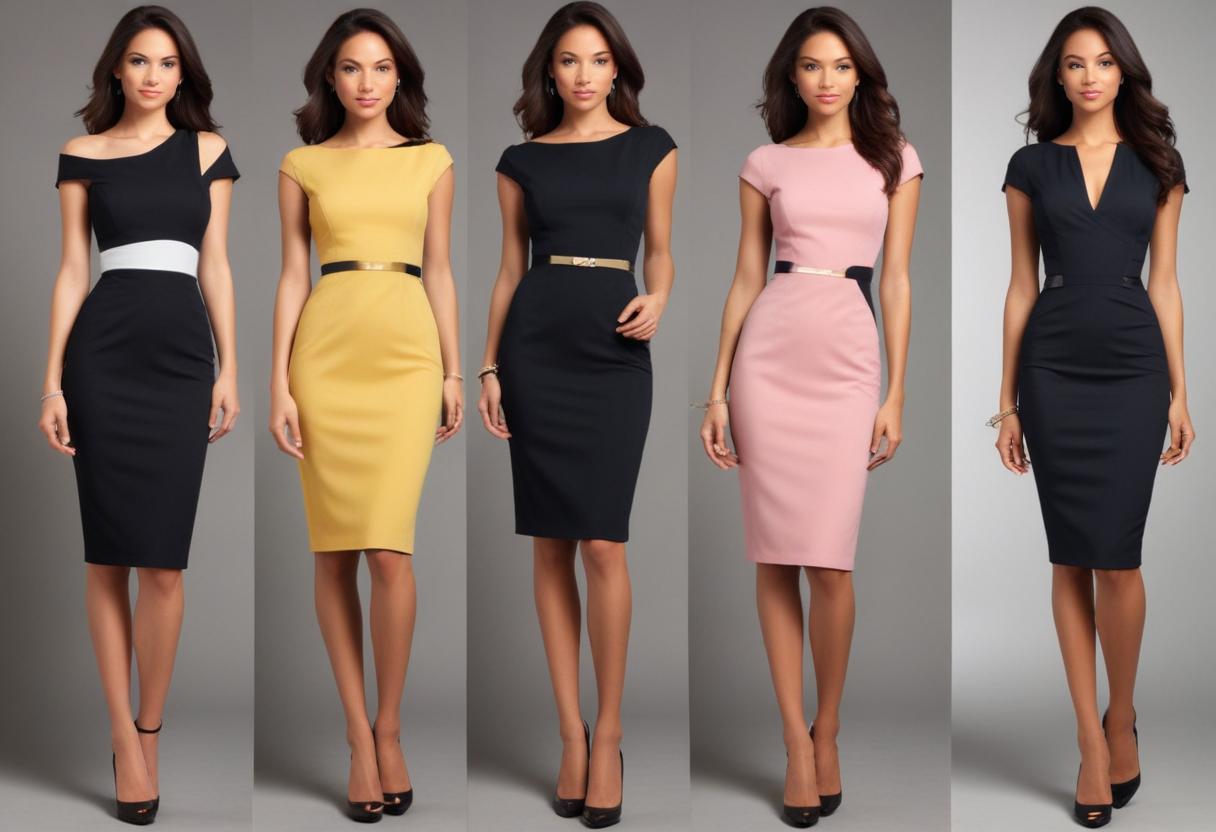
Mermaid Dress: Mermaid dresses are fitted through the bodice and hips, then flare out dramatically at the knees or lower, resembling the shape of a mermaid’s tail. They’re glamorous and elegant, often chosen for formal events or red carpet appearances.
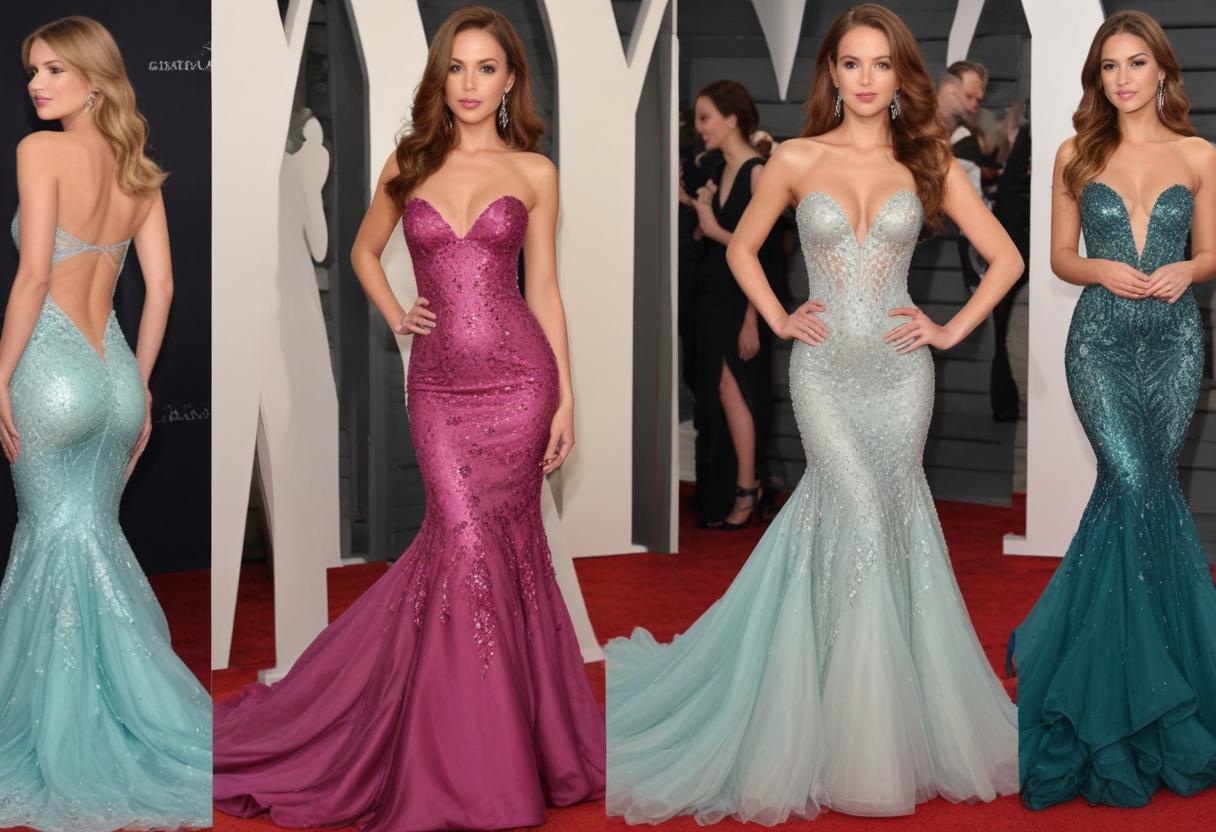
High-Low Dress: High-low dresses feature a hemline that is shorter in the front and longer in the back. They’re trendy and versatile, suitable for both casual and formal occasions.

Empire Waist Dress: Empire waist dresses have a high waistline that sits just below the bust, with a long, flowing skirt that skims over the hips and thighs. They’re flattering and comfortable, perfect for maternity wear or bohemian-inspired looks.

Tunic Dress: Tunic dresses are loose-fitting and typically shorter in length, resembling a long top or tunic. They’re comfortable and easy to wear, ideal for casual outings or layering with leggings and boots.

Slip Dress: Slip dresses are lightweight and typically made from satin or silk, resembling a slip worn underneath clothing. They’re sleek and sensual, often worn as lingerie or layered with a t-shirt or sweater for a chic daytime look.

Sweater Dress: Sweater dresses are made from knit fabric and are typically longer in length, resembling an oversized sweater. They’re cozy and comfortable, perfect for staying warm in colder weather while still looking stylish.

Cutout Dress: Cutout dresses feature strategic cutouts or openings in the fabric, revealing glimpses of skin in unexpected places. They’re edgy and modern, ideal for making a statement at parties or nightclubs.

Ruched Dress: Ruched dresses feature gathered fabric that creates a textured and gathered effect, flattering the figure and enhancing curves. They’re versatile and suitable for both casual and formal occasions.

Plunge Neckline Dress: Plunge neckline dresses feature a deep V-shaped neckline that plunges down the front of the dress, often creating a daring and dramatic look. They’re glamorous and perfect for making a statement at special events or parties.

Balloon Sleeve Dress: Balloon sleeve dresses feature sleeves that are voluminous and puffed, resembling balloons. They’re trendy and fashion-forward, adding a unique touch to your look.

Asymmetrical Dress: Asymmetrical dresses feature hemlines or details that are uneven or off-center, creating a dynamic and modern silhouette. They’re stylish and perfect for adding visual interest to your outfit.

T-shirt Dress: T-shirt dresses are loose-fitting and resemble oversized t-shirts in dress form. They’re casual and comfortable, perfect for everyday wear or running errands.

Embroidered Dress: Embroidered dresses feature intricate stitching or embroidery designs on the fabric, adding texture and detail to the dress. They’re elegant and perfect for adding a touch of bohemian flair to your look.

Off-the-Shoulder Maxi Dress: Off-the-shoulder maxi dresses feature a long, flowing skirt and a neckline that sits below the shoulders, exposing the collarbones and shoulders for a romantic and feminine look.
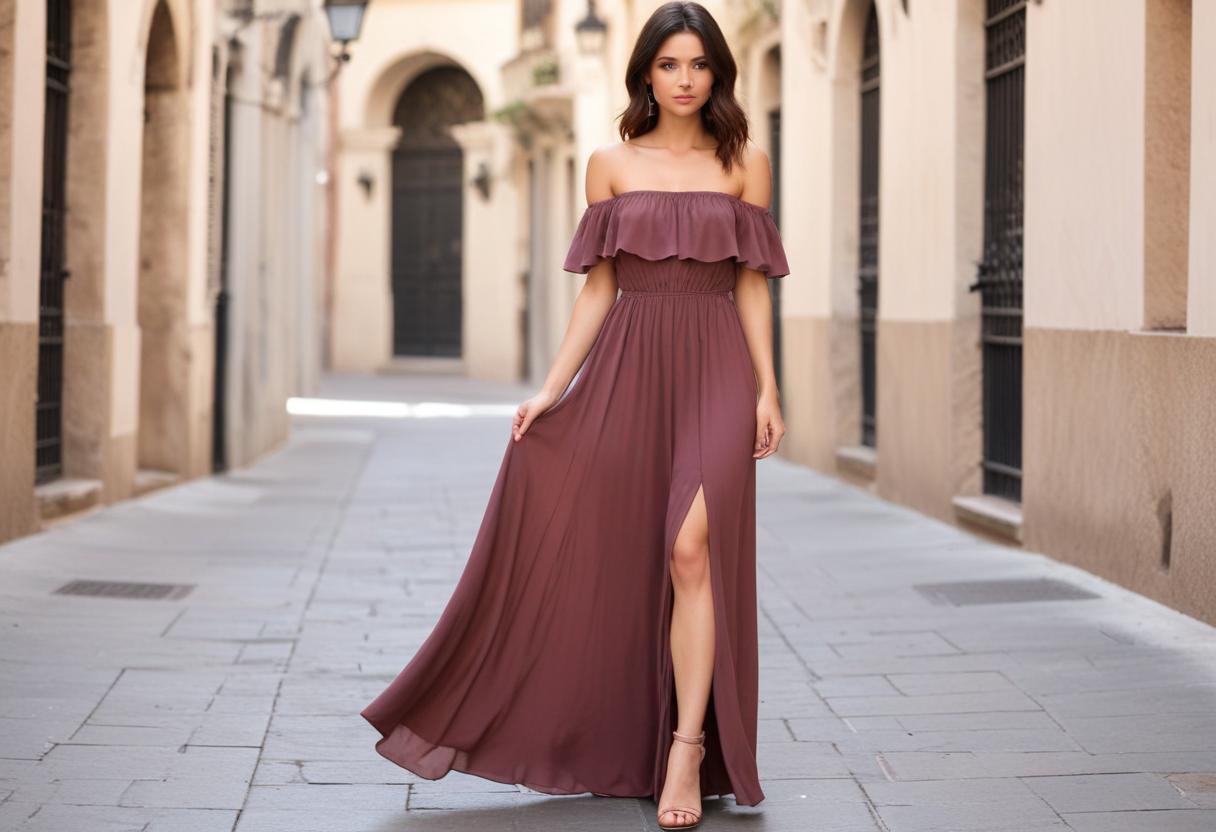
Draped Dress: Draped dresses feature fabric that is gathered or draped across the body, creating fluid and elegant lines that flatter the figure. They’re versatile and suitable for various occasions.

Empire Waist Maxi Dress: Empire waist maxi dresses have a high waistline that sits just below the bust, with a long, flowing skirt that skims over the hips and thighs. They’re comfortable and perfect for summer days or beach vacations.

Asymmetric Hem Dress: Asymmetric hem dresses feature a hemline that is longer on one side than the other, creating an asymmetrical and modern silhouette. They’re stylish and perfect for adding a unique touch to your look.

Fit-and-Flare Midi Dress: Fit-and-flare midi dresses feature a fitted bodice that flares out into a midi-length skirt, hitting below the knee. They’re classic and versatile, suitable for both casual and formal occasions.

Peasant Dress: Peasant dresses are loose-fitting and typically feature billowy sleeves, smocking, or ruffled detailing for a bohemian-inspired look. They’re comfortable and perfect for summer festivals or outdoor gatherings.

Ruffle Hem Dress: Ruffle hem dresses feature a hemline that is adorned with ruffles or frills, adding volume and movement to the skirt. They’re playful and feminine, perfect for adding a touch of romance to your look.

Lace Dress: Lace dresses feature intricate lace detailing or overlays, adding texture and elegance to the dress. They’re timeless and perfect for weddings, parties, or other special occasions.

Midi Shirt Dress: Midi shirt dresses feature a button-down front like a shirt, with a collar and cuffs, but are longer in length, hitting below the knee. They’re chic and versatile, suitable for both casual and professional settings.

Fit-and-Flare Mini Dress: Fit-and-flare mini dresses feature a fitted bodice that flares out into a short, flirty skirt, hitting above the knee. They’re playful and perfect for parties, nights out, or summer gatherings.
Types of traditional dresses on women
Different countries and cultures often have unique traditional dress styles that reflect their history, customs, and aesthetics. Here are some examples of traditional dresses from various countries and cultures:
Kimono (Japan): The kimono is a traditional Japanese garment known for its long, wide sleeves and wrap-around design. It’s typically made from silk or other high-quality fabrics and is worn for special occasions such as weddings and tea ceremonies.
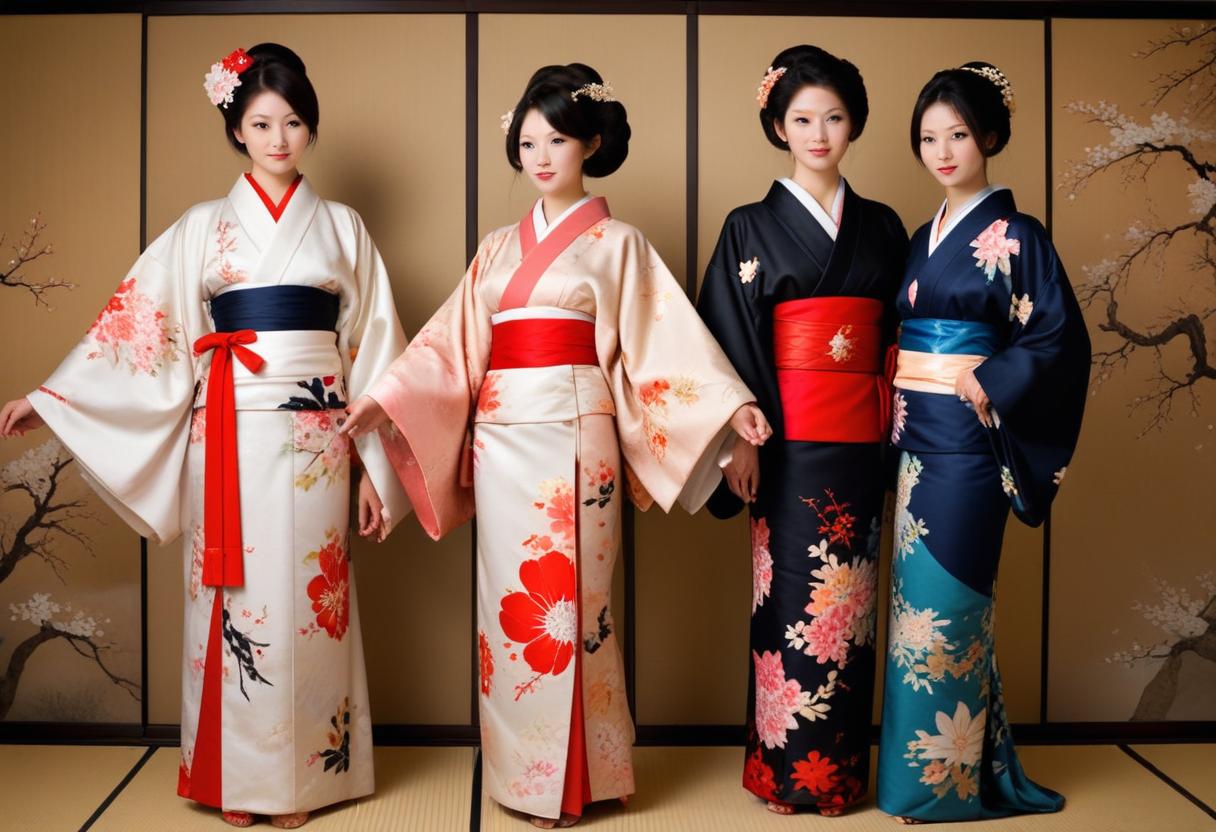
Hanbok (Korea): The hanbok is a traditional Korean dress characterized by vibrant colors and flowing silhouettes. It consists of a jeogori (jacket) and chima (skirt) for women, and a jeogori and baji (pants) for men. Hanboks are worn during festivals, weddings, and other formal events.

Sari (India): The sari is a traditional Indian garment consisting of a long piece of fabric that is draped elegantly around the body. It’s typically worn with a blouse (choli) and a petticoat (underskirt) and comes in a variety of fabrics, colors, and embellishments. Saris are worn for weddings, festivals, and other special occasions.

Cheongsam/Qipao (China): The cheongsam, also known as the qipao, is a traditional Chinese dress characterized by its form-fitting silhouette and high neckline. It’s typically made from silk or other luxurious fabrics and is often adorned with intricate embroidery or decorative buttons. Cheongsams are worn for formal events and celebrations.
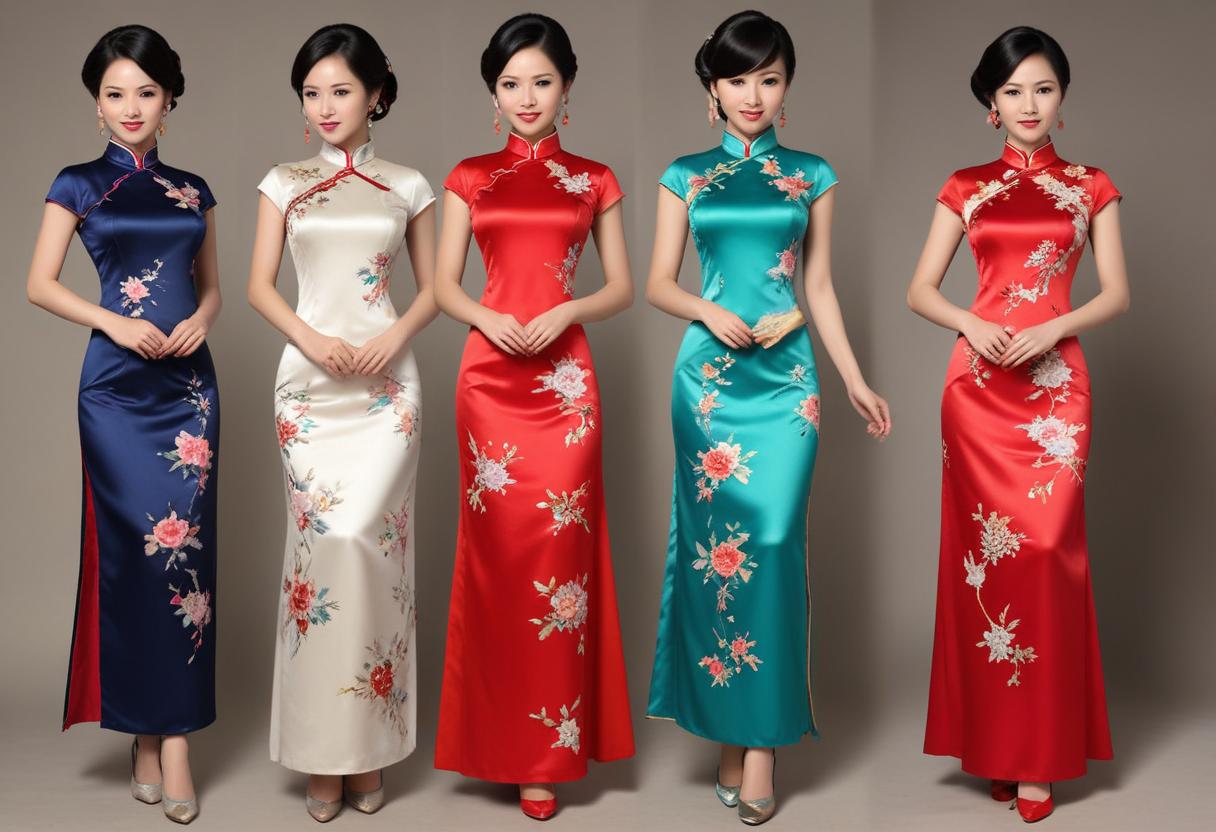
Dirndl (Germany): The dirndl is a traditional Bavarian dress worn in Germany, Austria, and other Alpine regions. It consists of a bodice, blouse, full skirt, and apron, and is often paired with a puffed sleeve blouse and apron. Dirndls are worn for festivals such as Oktoberfest and other cultural events.

Hijab (Islamic countries): The hijab is a traditional Islamic garment worn by Muslim women to cover their hair and modesty. It comes in various styles and can be worn with other garments such as abayas, jilbabs, or niqabs, depending on cultural and personal preferences.

Hawaiian Muumuu (Hawaii): The muumuu is a traditional Hawaiian dress characterized by its loose, flowy silhouette and bright, floral prints. It’s often worn for casual occasions, such as luaus or beach weddings, and is designed for comfort and ease of movement.
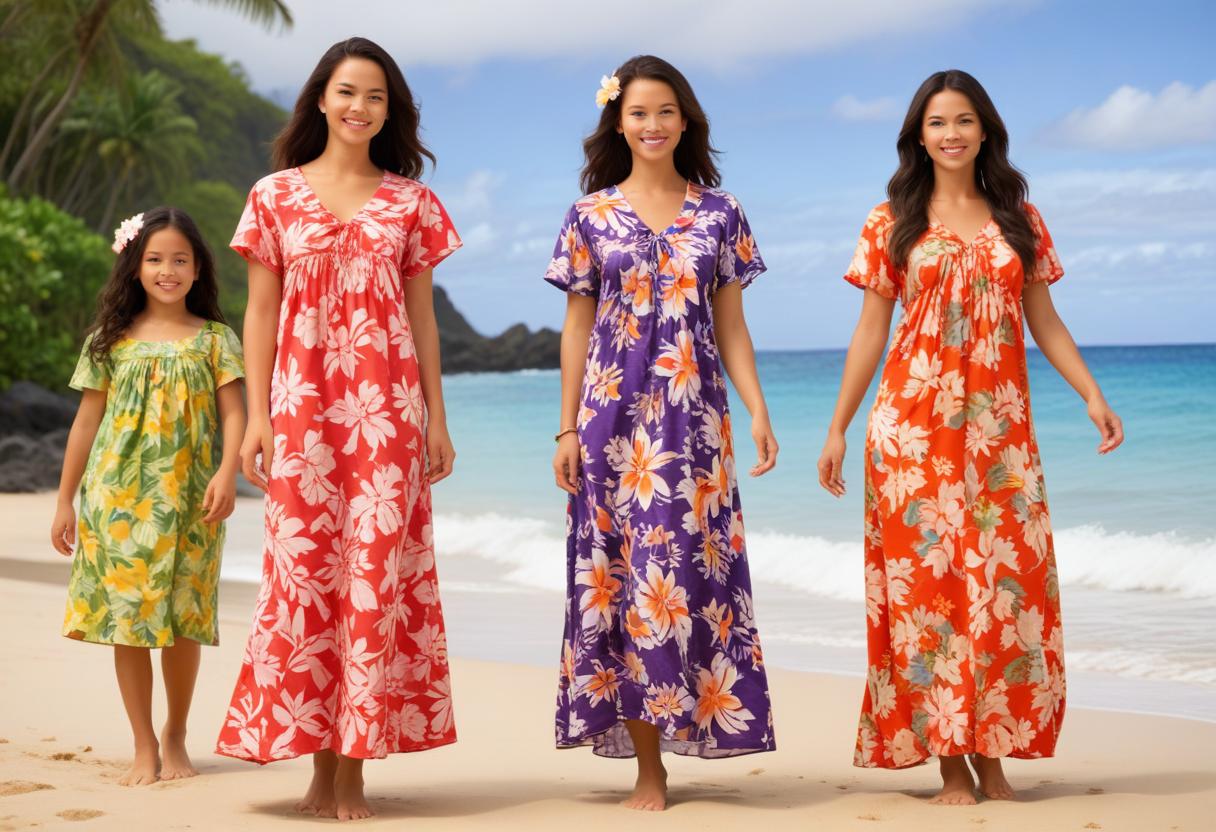
Scottish Kilt (Scotland): The kilt is a traditional Scottish garment worn by men, typically made from wool and featuring tartan patterns that represent different clans or regions. Kilts are often worn for formal events such as weddings, ceilidhs, and Highland games.

Dashiki (West Africa): The dashiki is a traditional West African garment characterized by its loose-fitting, tunic-style design and vibrant, colorful prints. It’s worn by both men and women for cultural events, festivals, and celebrations.

Thobe (Middle East): The thobe is a traditional garment worn by men in many Middle Eastern countries, such as Saudi Arabia and the United Arab Emirates. It’s a long, ankle-length robe typically made from lightweight fabrics such as cotton or linen and is worn for both casual and formal occasions.
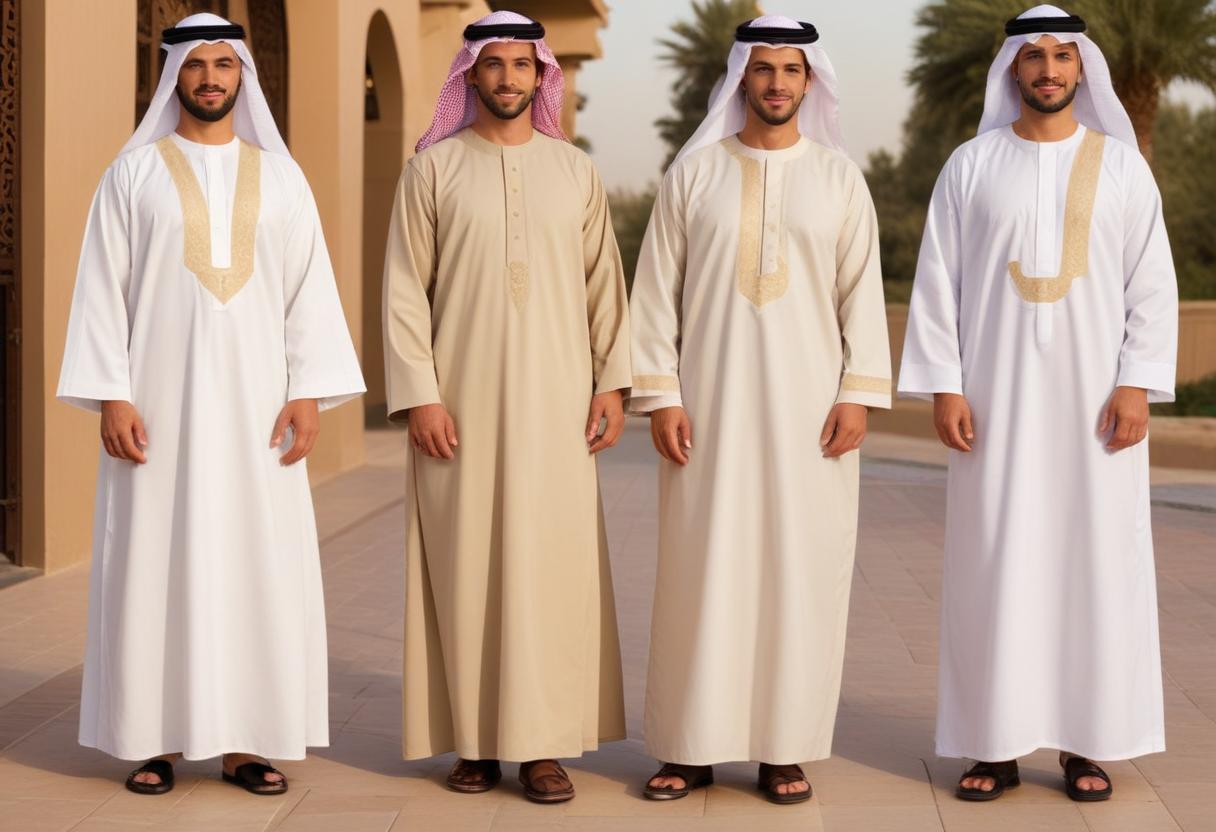
Bunad (Norway): The bunad is a traditional Norwegian costume worn for special occasions such as weddings, festivals, and national holidays. It varies in style and design depending on the region, with each bunad representing the local heritage and customs.

Ao Dai (Vietnam): The ao dai is a traditional Vietnamese dress characterized by its form-fitting silhouette and high side slits. It consists of a long, flowing tunic worn over trousers and is often made from silk or other lightweight fabrics. Ao dais are worn for formal events, weddings, and celebrations.
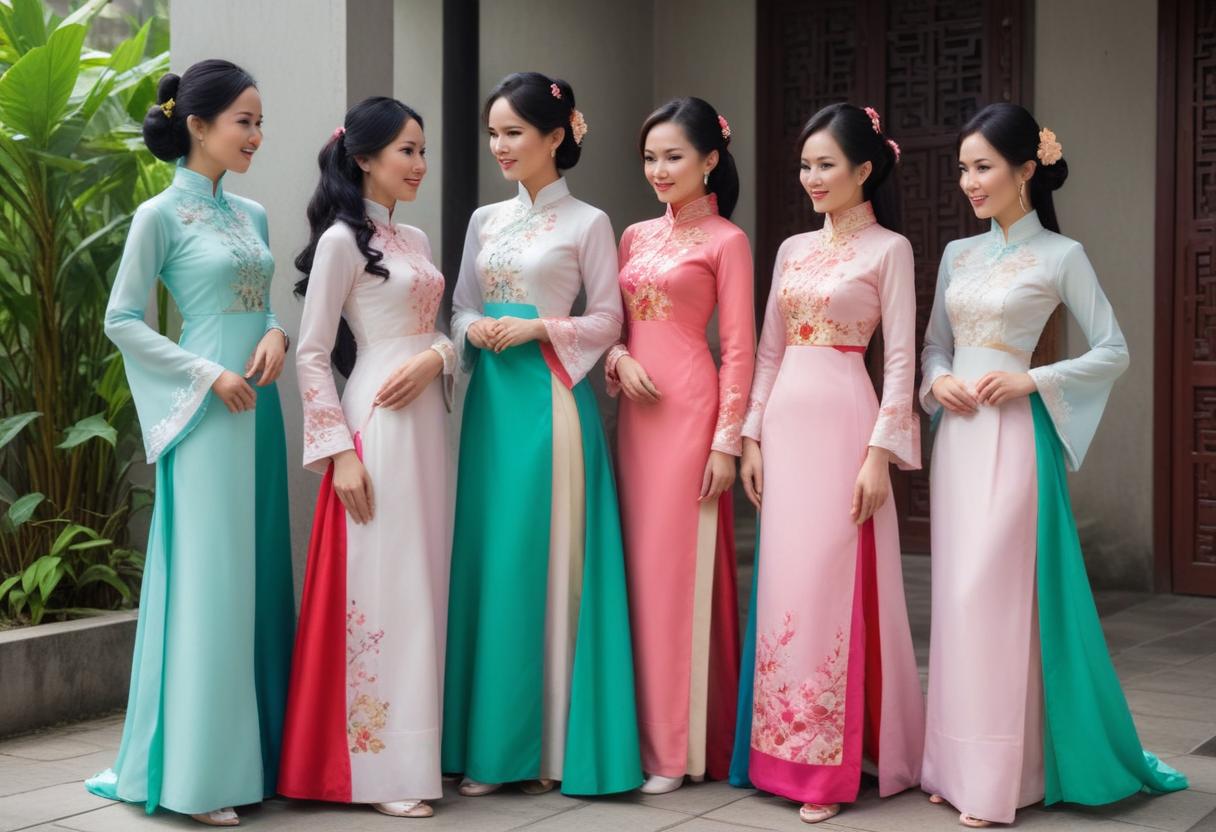
Kente Cloth (Ghana): Kente cloth is a traditional Ghanaian textile characterized by its vibrant colors and intricate geometric patterns. It’s often worn as a wrap or draped garment for special occasions such as weddings, festivals, and ceremonies.

Kurta Pajama (Pakistan): The kurta pajama is a traditional Pakistani outfit worn by men, consisting of a long tunic (kameez) paired with loose-fitting trousers (pajama). It’s often made from lightweight fabrics such as cotton or linen and is worn for formal events, festivals, and religious occasions.

Trachten (Austria): Trachten is a traditional Austrian dress worn for cultural events, festivals, and celebrations. It typically consists of a dirndl for women, featuring a bodice, blouse, full skirt, and apron, and lederhosen for men, consisting of leather shorts with suspenders.

Barong Tagalog (Philippines): The barong Tagalog is a traditional Filipino garment worn by men for formal events and special occasions. It’s a lightweight, embroidered shirt made from sheer fabric such as piña (pineapple) or jusi (silk) and is often paired with trousers or a formal skirt.

Kanga (East Africa): The kanga is a traditional East African garment worn by women, consisting of a rectangular piece of fabric with vibrant prints and Swahili proverbs or sayings. It’s worn as a wrap or headscarf and is often used for everyday wear or special occasions.

Yukata (Japan): The yukata is a casual Japanese kimono made from lightweight cotton or linen fabric. It’s typically worn during the summer months and is often seen at festivals, hot springs, and other outdoor events.

Sámi Gákti (Sápmi): The Sámi gákti is a traditional dress worn by the indigenous Sámi people of northern Scandinavia. It varies in style and design depending on the region and is often adorned with intricate embroidery, beadwork, and metal detailing.

Baju Kurung (Malaysia): The baju kurung is a traditional Malay dress worn by women, consisting of a loose-fitting tunic (baju) paired with a long skirt (kain). It’s often worn for formal events, religious ceremonies, and cultural celebrations.

Alternative Fashion Dress Types for Women
“Alternative dresses” can include a wide range of styles, from gothic and punk to cosplay and futuristic designs, allowing individuals to express their creativity and individuality through clothing.
Alternative or Edgy dresses for women often feature bold designs, unconventional silhouettes, and unique details that push the boundaries of traditional fashion. Cosplay, which involves dressing up as characters from movies, TV shows, comics, or video games, can also be considered a form of edgy dressing. Here are some types of edgy dresses, including those suitable for cosplay:
Gothic Dress: Gothic dresses often feature dark colors, dramatic silhouettes, and intricate lace or corset detailing. They may include elements like high necklines, bell sleeves, and asymmetrical hems, creating a dark and mysterious look.

Punk Dress: Punk dresses embrace rebellious and edgy aesthetics, featuring elements like studs, spikes, safety pins, and bold prints. They may incorporate elements of DIY fashion, distressed fabrics, and asymmetrical cuts for a raw and defiant look.
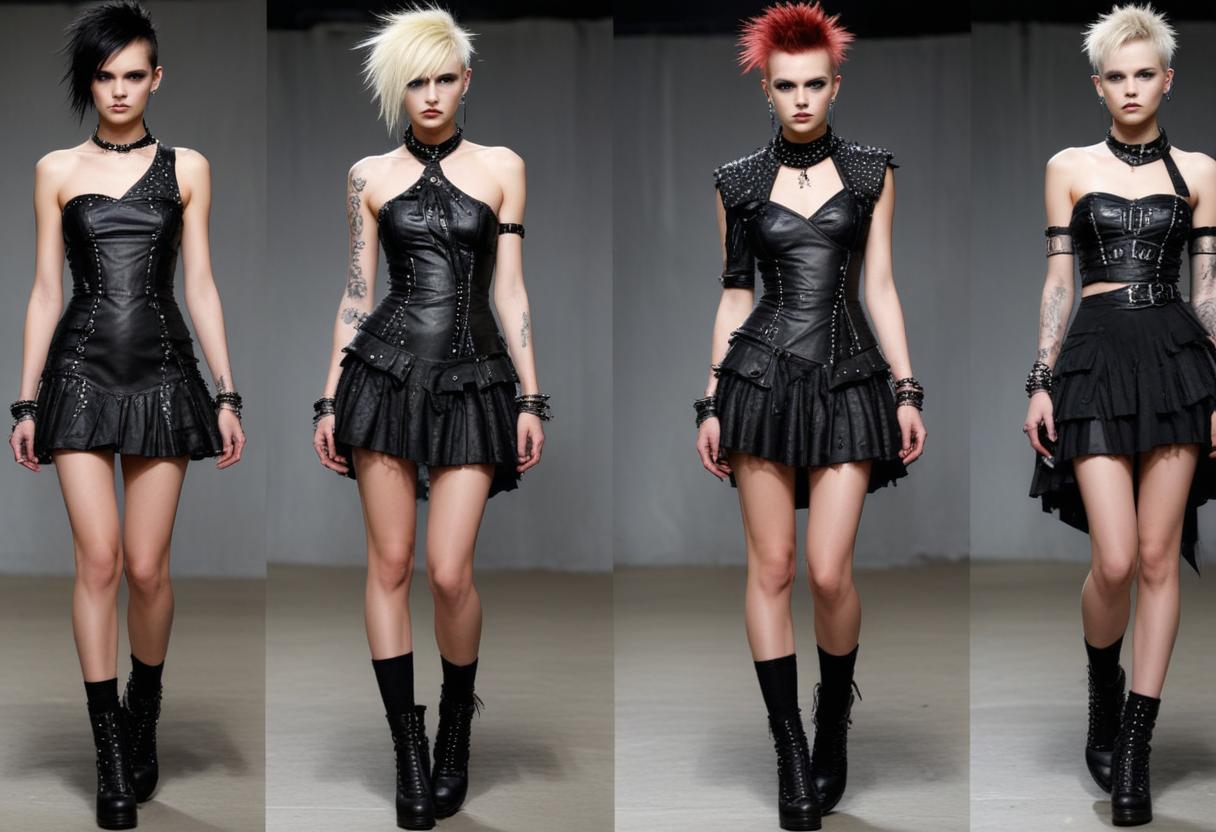
Rockabilly Dress: Rockabilly dresses draw inspiration from vintage 1950s fashion with a modern twist. They often feature retro prints like polka dots, cherries, or leopard print, as well as fitted bodices, full skirts, and sweetheart necklines for a bold and feminine look.

Cosplay Dress: Cosplay dresses are inspired by characters from movies, TV shows, comics, anime, or video games. They can range from elaborate costumes with intricate details to more casual interpretations of iconic characters. Cosplay dresses allow individuals to express their creativity and fandom through clothing.

Futuristic Dress: Futuristic dresses feature avant-garde designs, metallic fabrics, and sleek silhouettes inspired by science fiction and technology. They may include elements like asymmetrical shapes, cutouts, and futuristic embellishments for a bold and futuristic look.

Cyberpunk Dress: Cyberpunk dresses combine elements of punk fashion with futuristic aesthetics, featuring bold colors, neon accents, and industrial-inspired details. They may incorporate elements like harnesses, straps, and utility pockets for a rebellious and dystopian look.

Anime-inspired Dress: Anime-inspired dresses draw inspiration from Japanese animation and manga, featuring colorful prints, whimsical designs, and exaggerated proportions. They may include elements like oversized bows, ruffles, and playful motifs for a cute and playful look.

Steampunk Dress: Steampunk dresses blend Victorian-era fashion with industrial elements and retro-futuristic aesthetics. They often feature corsets, bustles, gears, and clockwork-inspired accessories, creating a unique and adventurous look.
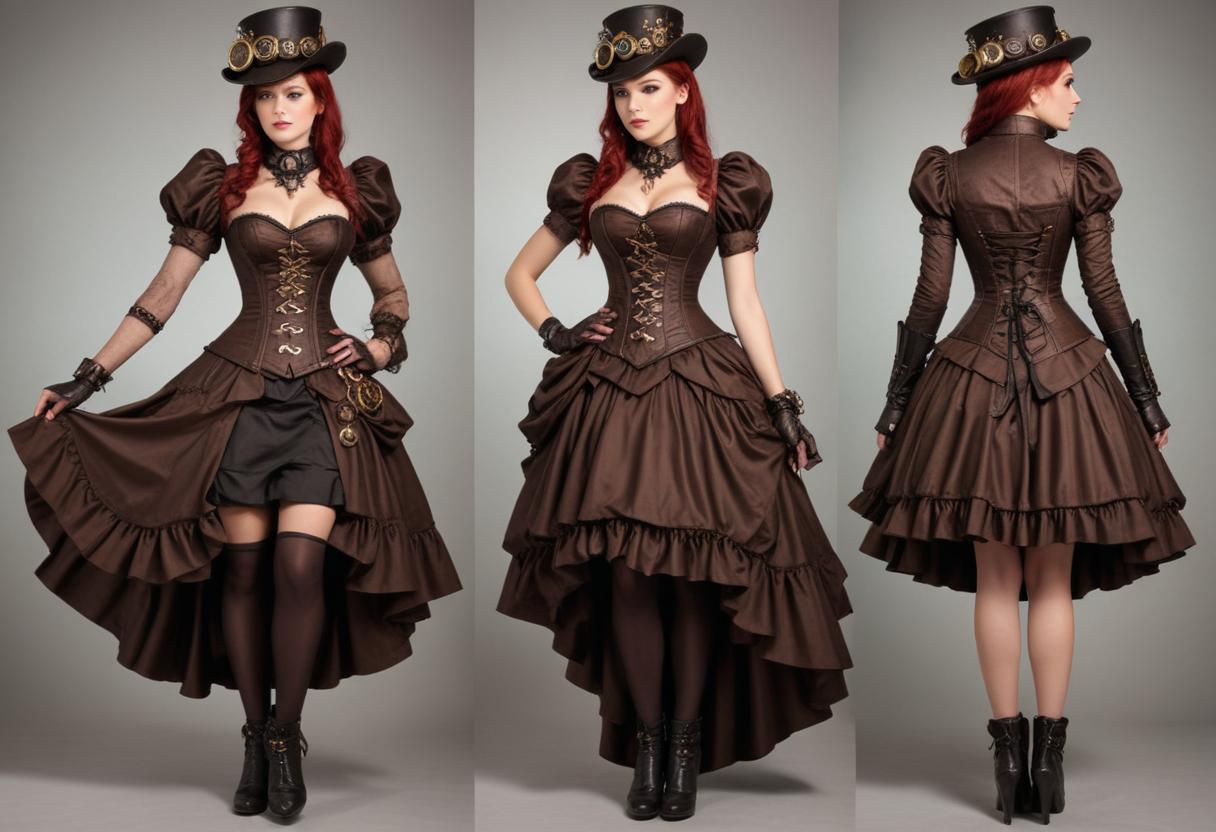
Alternative Wedding Dress: Alternative wedding dresses offer non-traditional options for brides who want to make a statement on their big day. They may feature unconventional colors, edgy silhouettes, and unique details like leather accents, feathers, or chains.

Post-Apocalyptic Dress: Post-apocalyptic dresses are inspired by dystopian settings and survivalist themes, featuring distressed fabrics, rugged textures, and utilitarian details. They may include elements like ripped hems, weathered finishes, and layered draping for a rugged and edgy look.

